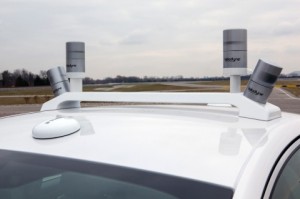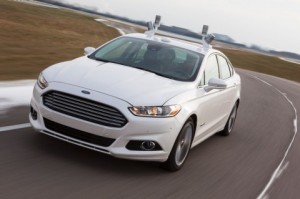Talk about Ford’ward thinking. Ford has already been working on an an automated Ford Fusion Hybrid research vehicle, which they unveiled last month. Now, Ford has announced some projects they are doing in conjunction with Massachusetts Institute of Technology (MIT) and Stanford University. They are working to research and develop solutions to some of the technical challenges surrounding automated driving.
This may sound like stuff right out of the future, and you’re right! Automated driving is a key component of Ford’s Blueprint for Mobility, which outlines what transportation will look like in 2025 and ford’ward. In addition, it looks at the technologies, business models and partnerships required to get there. With its automated Fusion Hybrid research vehicle at the center of all the action, Ford is exploring potential solutions for the longer-term societal, legislative and technological issues that we all could face with a future of fully automated driving.
Check out this video…
“To deliver on our vision for the future of mobility, we need to work with many new partners across the public and private sectors, and we need to start today,” said Paul Mascarenas, chief technical officer and Vice President, Ford research and innovation. “Working with university partners like MIT and Stanford enables us to address some of the longer-term challenges surrounding automated driving while exploring more near-term solutions for delivering an even safer and more efficient driving experience.”
The automated Fusion Hybrid is unique because it is the first to use the same technology  already in Ford vehicles in dealer showrooms. They then added four LiDAR sensors to generate a real-time 3D map of the vehicle’s surrounding environment.
already in Ford vehicles in dealer showrooms. They then added four LiDAR sensors to generate a real-time 3D map of the vehicle’s surrounding environment.
While the vehicle can sense objects around it using the LiDAR sensors, Ford’s research with MIT uses advanced algorithms to help the vehicle learn to predict where moving vehicles and pedestrians could be in the future. Armed with this “predictive data,” provides the vehicle with a better sense of the surrounding risks, enabling it to plan a path that will safely avoid pedestrians, vehicles and other moving objects/hazards.
Ford is also working with Stanford to explore how the sensors can see around obstacles. Usually, when a driver’s view is blocked by an obstacle like a big truck, the driver may try to maneuver within the lane to take a look around it and see what is ahead. Similarly, this research would enable the sensors to “take a peek ahead” and make evasive maneuvers as required.


